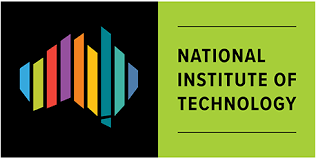Python is a multi-paradigm programming language used by start-ups and tech giants like Google, Facebook, Netflix, and more. With intuitive, readable syntax, Python is a great first programming language to learn.

How great would it be to write your own computer program? Python is a multi-paradigm programming language used by start-ups and tech giants like Google, Facebook, Netflix, and more.
With intuitive, readable syntax, Python is a great first programming language to learn.This course is a great place to start learning Python – no prior programming knowledge is required. Completing the course earns you a Statement of Achievement.
Course Overview
How great would it be to write your own computer program? Python is a multi-paradigm programming language used by start-ups and tech giants like Google, Facebook, Netflix, and more.
With intuitive, readable syntax, Python is a great first programming language to learn.
Programming skills open you up to careers in almost any industry and are required if you want to continue to more advanced and higher-paying software development and engineering roles.
This course is a great place to start learning Python – no prior programming knowledge is required. Completing the course earns you a Statement of Achievement.
The course also helps you prepare for two Python programming certifications:
PCEP – Certified Entry-Level Python Programmer Certification
PCAP – Certified Associate in Python Programming Certification
Key Topics
In this course you will learn:
the universal concepts of computer programming;
the syntax and semantics of the Python language;
practical skills in resolving typical implementation challenges;
how to use the most important elements of the Python Standard Library;
how to install your runtime environment;
how to design, develop, test, and debug your own Python programs.
how to adopt general coding techniques and best practices in your projects;
how to process strings;
how to use object-oriented programming in Python;
how to import and use Python modules, including the math, random, platform, os, time, DateTime, and calendar modules;
how to create and use your own Python modules and packages;
how to use the exception mechanism in Python;
how to use generators, iterators, and closures in Python;
how to process files.
Why Learn PYTHON Programming?
Python is omnipresent, people use numerous Python-powered devices daily, whether they realize it or not.
There have been millions (well, actually billions) of lines of code written in Python, which means almost unlimited opportunities for code reuse and learning from well-crafted examples.
What’s more, there is a large and very active Python community, always happy to help. There are also a couple of factors that make Python great for learning:
It is easy to learn – the time needed to learn Python is shorter than for many other languages; this means that it’s possible to start the actual programming faster;
It is easy to use for writing new software – it’s often possible to write code faster when using Python;
It is easy to obtain, install and deploy – Python is free, open and multiplatform; not all languages can boast that.
Completing this course can be a stepping-stone to learning any other programming language, and to exploring technologies using Python as a foundation (e.g., Django). The course is distinguished by its affordability, friendliness, and openness to the student.
The first part started from the absolute basics, guiding you step by step to more complex problems that will be explained in this part, making you a responsible software creator able to take on different challenges in many positions in the IT industry.
Duration:
Option 1: 5 days (5 hours each day) – 25 hours
Option 2: 4 Saturdays (6 hours each day) – 24 hours
Delivery Mode:
Our focus is to help you develop the skills and knowledge you need to get a job or advance your career. Our learning outcomes are industry-focused to prepare our students for the highly competitive business world.
Our vision is to be continually recognised as a leading institute, acknowledged for its excellence by students, partners, and the wider community.
“Our mission is to enable students to realise their full
potential by empowering them through innovative education and industry-focused
training in a conducive environment.”
Helping students meet their education and career goals; Creating learning outcomes that are industry-focused; Being innovative and technology-oriented; and Creating a conducive and inclusive learning environment
The National Institute of Technology’s education and training decisions are governed by a very experienced Education and Training Advisory Board (ETAB). The board diligently ensures that NIT’s education and training are in line with the industry requirements and NIT’s vision.
© 2025 coursetakers.com All Rights Reserved. Terms and Conditions of use | Privacy Policy